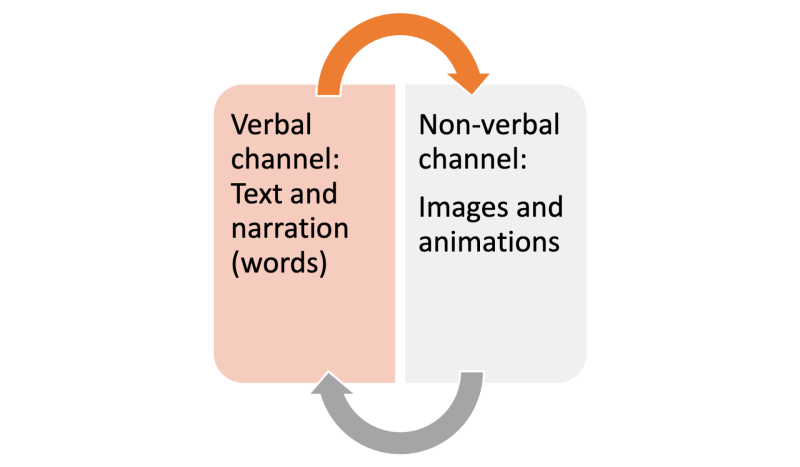Element 7 of UNE’s signature pedagogy, focuses on the use of Quality Media.
Quality can refer to a range of media aspects. In this post we explore the concept of chunking and some tips of what you can do to create engaging videos that are fit for purpose and support student engagement and the learning process.
Whilst it is now common for many units to include video as part of the learning experience, it is important to consider how they are fit for purpose and support quality learner engagement.
Why multi-media can help learning
Learners have limited cognitive capacity available within their working memory. Cognitive capacity can be extended by grouping similar information together.
A benefit of including videos in your online learning unit are that they enable learners to use both verbal and nonverbal information channels.

Image showing viral (text and narrative) and non-verbal channels (Images and animation)
Grouping verbal with non-verbal information helps extend cognitive capacity and move information into long-term memory.
learners actively engage in selecting, organizing, and integrating information, that the amount of information learners can process at any given time is limited, and that cognitive architecture includes independent verbal and nonverbal channels for processing this information. (Cavanagh & Kiersch, 2022, p. 1).
If you think of video as a part of the design of your course, it can help to ensure that you are providing engaging learning experiences.
It’s not just about including video, but how this use of video is included.
How does it fit with the overall design of the learning experience?
To help chunk video’s you could also consider the following
Additional ways to engage learners with videos include, embedding interactive questions or activities into video content – H5P can be used in many ways and can be embedded within a video, or the video format be used within H5P. Find out more at H5P.com.
These are all aspects to consider as part of the overall design for learning in a module or topic within a unit. This is important when we think about videos as part of the wider architecture or design of the learning environment.
Resources
Cavanagh, T. M., & Kiersch, C. (2022). Using commonly-available technologies to create online multimedia lessons through the application of the Cognitive Theory of Multimedia Learning. Educational Technology Research and Development, 1–21. https://doi.org/10.1007/s11423-022-10181-1
